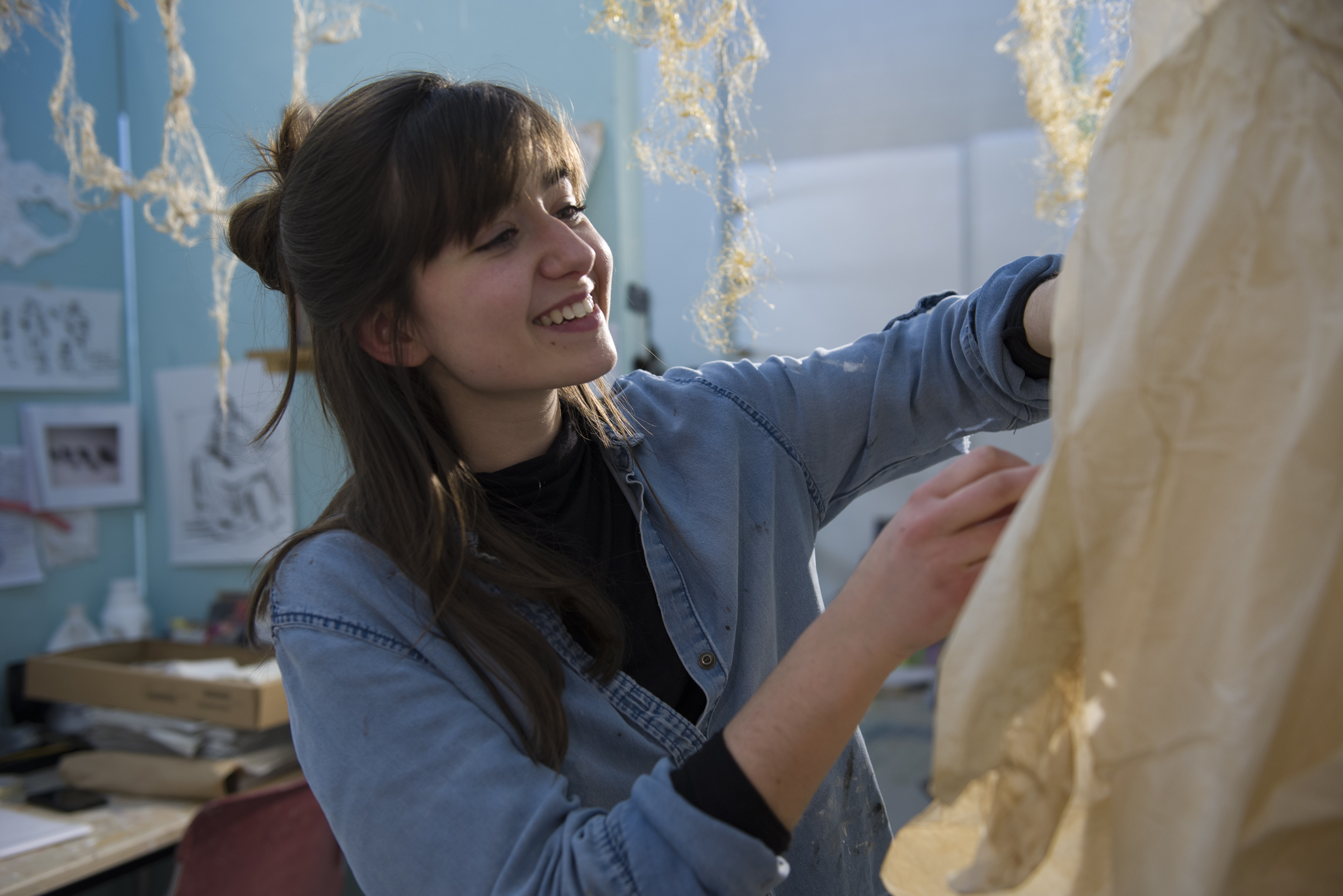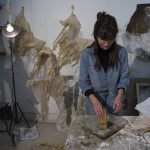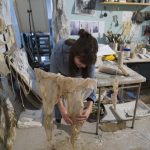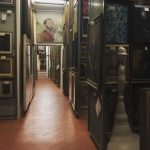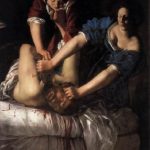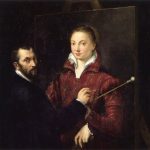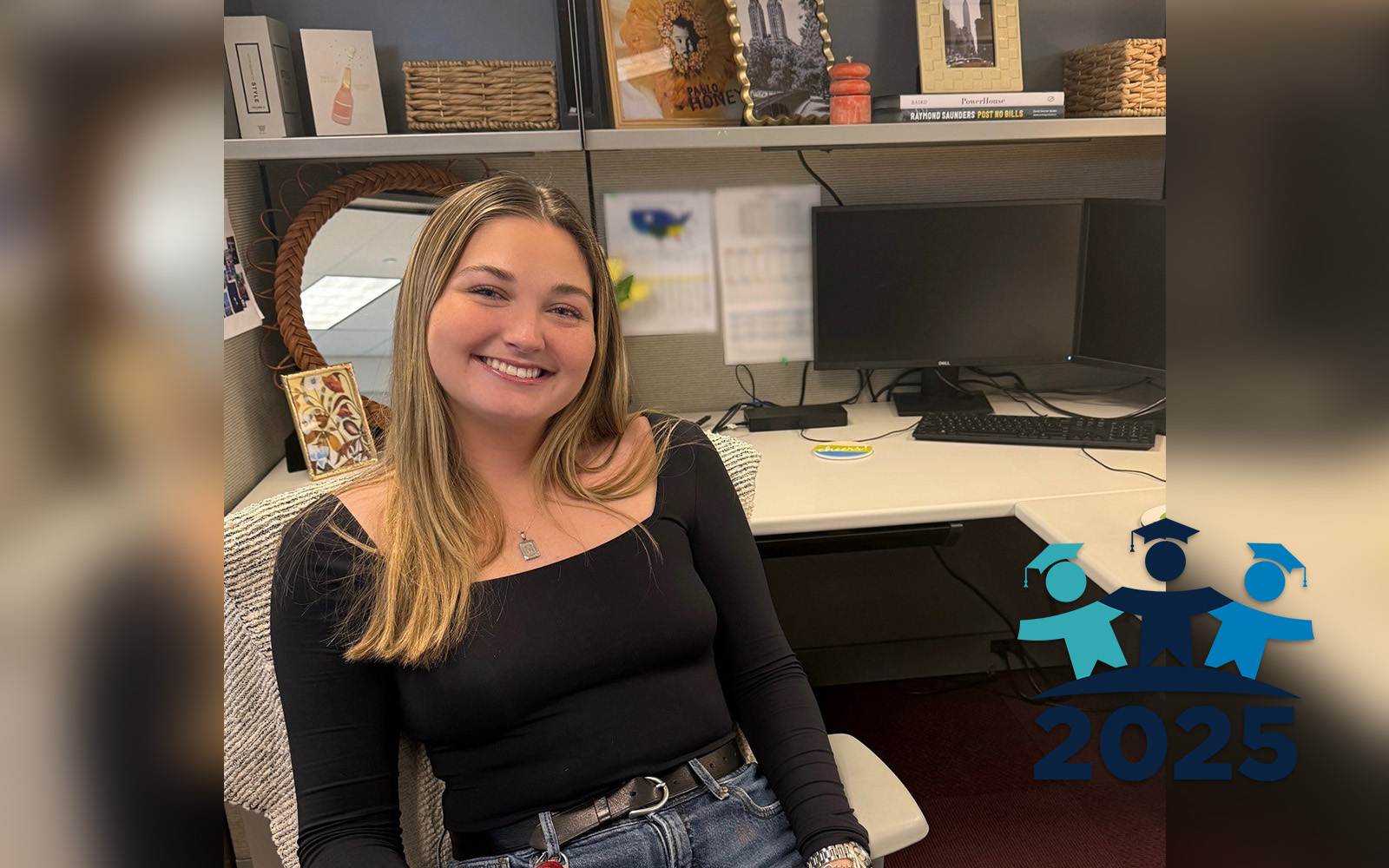Wandering through the Uffizi Gallery in Florence, Italy, Isabella Saraceni was initially captivated by the work of the great masters of art that surrounded her: Botticelli, Da Vinci, Michelangelo, Caravaggio, Raphael. But after a few visits to the gallery, Saraceni eventually began to notice a conspicuous absence in the displayed collection: where were the women artists?
Saraceni, a senior fine arts major at the University of Connecticut, made this troubling observation when she was studying abroad last fall while participating in the UConn Studio Fine Arts Program. She is now in the final stages of working on her IDEA grant, which she received last spring. The goal of her project is to shed light on the work of some of the Renaissance’s great talents that have been hidden away in museum basements for too long.
“Women weren’t allowed to be artistic, and if they were, it was seen as demonic. But for artistic men, they were seen as a gift from god,” Saraceni says.
What is so frustrating about this phenomena is that these women were well-known during their lifetimes, working with their contemporaries and friends like Da Vinci and Michelangelo. Saraceni says this suggests there was a conscious effort to erase the work of these women from history.
One of the biggest problems with established art museums, Saraceni says, is that people tend to view them as all-encompassing authorities on what is considered “great art.” In reality, there is a major disconnect between what is shown to the public and the true diversity and richness of art throughout history.
“Museums are certain people telling you ‘this is what’s important,’” Saraceni says. “You’re not seeing what’s not being shown.”
When she traveled back to Florence to conduct her research, Saraceni was able to go through the storage rooms in the Uffizi. Making her way through the labyrinth of un-shown work, Saraceni saw row after row full of work by white men until she caught a glimpse of a woman’s self-portrait off in a distant corner.
“It was a really emotional experience to be surrounded by all this art by men and have that one guiding light like: ‘there she is!’” Saraceni says.
One of the most impactful stories Saraceni discovered during her research was that of Artemisia Gentileschi, a 17th-century Baroque painter. Gentileschi brought rape charges against her painting teacher and actually won her case, but only after being tortured in court with thumb screws, which devastated her hands, the tools of her art, to prove she was not lying.
This experience made its way into Gentileschi’s work, especially one of her better-known pieces depicting the biblical story of “Judith Slaying Holofernes.”
“Every man painted Judith as weak, as if she were thinking ‘This is violence is disgusting. I don’t want to do this.’ But that’s in accurate for a woman who is angry. In Artemisia’s painting Judith is different: she has muscle, she’s not recoiling, she’s strong,” Saraceni says.
In light of current events like the MeToo movement and women’s marches, Saraceni says it felt particularly important to shed light on these feminine stories now.
“It was really powerful to see how far these artists had to go to be seen as equal to men,” says Saraceni. “They had to do backbends and jump through hoops. And even then, they weren’t seen in the same way.”
Saraceni has been using social media through an art-focused Instagram account to share her process and sources of inspiration.
For the last stage of Saraceni’s project, she’s creating new art to highlight injustices from the past.
Saraceni originally intended to create a series of six large oil paintings as the culmination of her research but has since started thinking about using sculptures instead.
“I want this to have a presence in our physical space versus a 2D surface that looks like it’s in another space,” Saraceni says. “It’s taken quite a turn from where I started. It keeps kind of transforming.”
The site is a large, sectioned off studio; the walls of this maze stained with paint and dyes with a portrait of a woman, layers intentionally peeling away and a series of tissue paper sculptures dangling from an impromptu clothes line.
Saraceni says this work has transformed how she views herself and her relationship to her artwork.
“I feel like a completely different person from when I started in how I see myself and my worth as a woman,” Saraceni says.
Saraceni hopes this project will be able show the value women have contributed to art and why their work deserves to be recognized alongside work from male counterparts.
“The work is so valuable to how we view art and humanity and what art can do for us and how it can show the great expanse of life,” Saraceni says. “Some people see women as lacking value and worth because they have been so hidden. I hope this project can add to the conversation about how we can change that.”
Saraceni will be displaying her work for a week, beginning on April 15 with a reception opening from 6-8 p.m. in the Vais Gallery in the Fine Arts Building.
